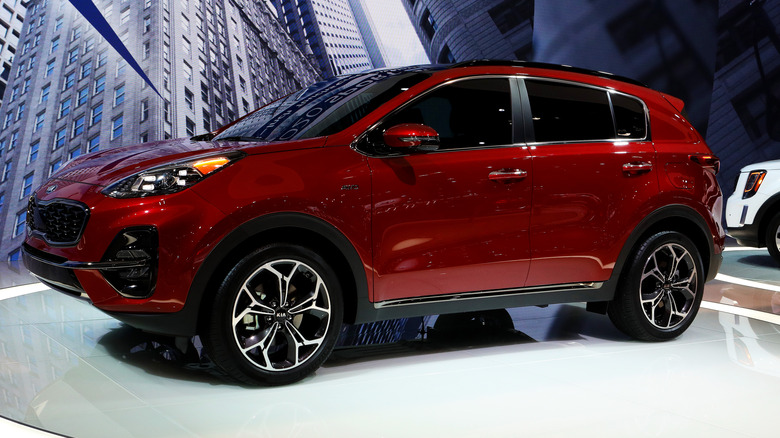
Raymond Boyd/Getty Images
By Joe Hindy/
Automobile engines have undergone tons of changes over the years, primarily to make them more efficient. For the most part though, engine changes result from a string of iterative improvements on existing technologies rather than full-blown innovations. One example is the gasoline direction injection fuel system, or GDi. Automakers began experimenting with GDi directly into the engine cylinders as early as the 1920s. The technology was initially used in German fighter planes to help prevent engine stalling during high-speed maneuvers. However, GDi was negatively impacted by its era’s technology, resulting in fuel droplets separating from the air stream. This caused an uneven fuel distribution between the cylinders and kept the technology from being used in automobiles in the early days.
Today, the GDi engine is a lot more common. It mostly comes as a response to the increasingly stringent CAFE standards, where automakers must increase miles-per-gallon figures while reducing emissions. GDi started to become more popular around 2014 and 2015 after engines started appearing more frequently in the early 2000s. Around then, car manufacturers had figured out how to make a reasonably reliable GDi engine that could withstand daily stress.
Thus, it’s very likely that you or someone you know has a car with a GDi. For the most part, engines designed this way are way better than they were even 20 years ago, but there are still some things you should know about the GDi engine.
What is a gas direction injection (GDi) engine?
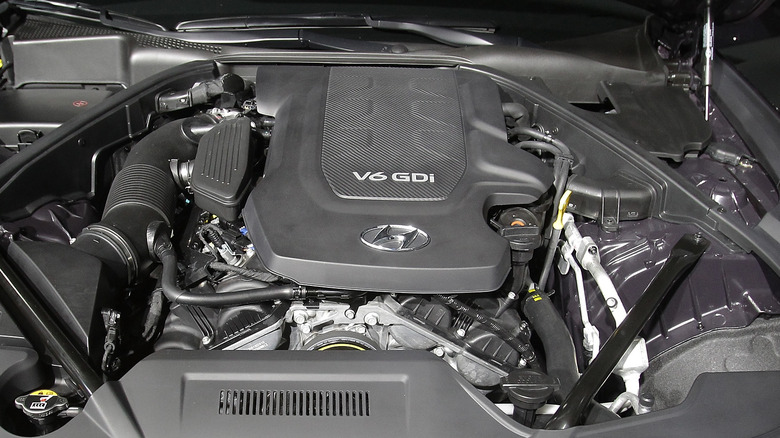
Chung Sung-jun/Getty Images
Let’s start with the basics. GDi stands for «gas direct injection» and refers to how the engine injects gas into the cylinders. In any internal combustion engine, fuel is sprayed into the air to create a mixture of fuel and air. Then, the engine’s pistons compress the mixture within the cylinder, which causes it to heat up. Once the mixture reaches the proper density, the spark plug ignites it. The resulting combustion then shoots the piston back to its starting position. The kinetic energy generated from the piston’s movement runs your car.
In the old days, fuel injectors sprayed gas into the intake manifold where it would mix with air before going into the engine cylinder. That’s called port injection. In a GDi engine, the gas is sprayed directly into the engine cylinder where it mixes with air just before the piston compresses it. By shooting the gas directly into the cylinder, it allows the gas to atomize better, which leads to a cleaner combustion. The result is better fuel economy, fewer emissions, and more efficient engines.
Mitsubishi was the first automaker to use it in a mass market vehicle. It soon migrated to European automakers, and American automakers eventually got in on the action. These days, you can find GDi engines from nearly every major automaker to some extent, although some brands, like Mazda and Volkswagen, use it more than others. With hybrids, EVs, and possible hydrogen-powered vehicles, the GDi may be one of the last innovations to keep the internal combustion engine useful within ever-tightening government emissions standards.
GDi engines are more fuel efficient

Sjoerd Van Der Wal/Getty Images
What makes the GDi engine more fuel-efficient? It’s mostly the efficiency with which it uses gasoline. In the old days, fuel injectors would spray gas into the port manifold where it would then enter the engine. This worked well for its time and was highly reliable. However, gas is difficult to control, and that made port injection inefficient. With GDi engines, the injector shoots the gas directly into the cylinder, which means it doesn’t have to go anywhere since it’s being deposited exactly where it needs to be.
The result is that the car engine can more directly control the fuel and air mixture, resulting in more efficient burns when combustion occurs. The increase in efficiency not only burns more of the gas (resulting in less exhaust), but the precision also allows engineers to create more powerful engines with higher compression ratios. In short, GDi engines are more precise all around, and it enables engineers to do more things. One neat trick that GDi engines do is to change the fuel and air mixture based on the car’s load conditions dynamically, which ensures that the car is always getting the proper amount of fuel with the proper fuel-to-air ratio.
GDi engines also shoot fuel with higher pressure than port injection to assist with this level of precision. This can introduce some problems down the line as prior technologies used low-pressure fuel injection. Even so, with the way GDi engines are made, having everything take place in the engine cylinder is simply the most efficient way to do it, at least for now.
GDi engines are not without their issues, including carbon buildup
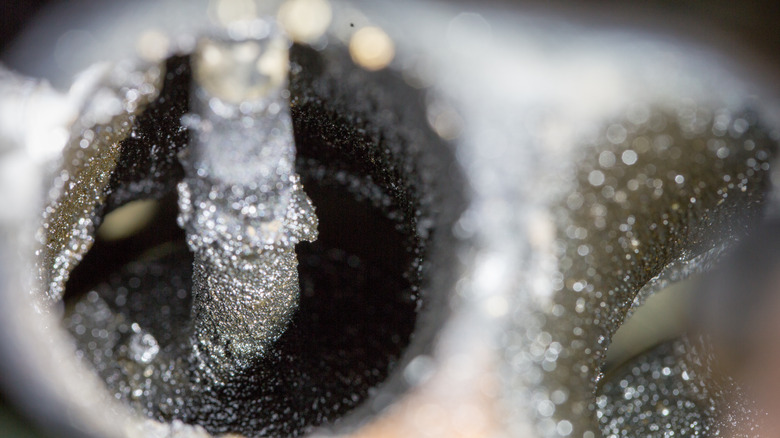
Bear Gong/Shutterstock
GDi engines aren’t without their issues; fortunately for consumers, those issues are fairly well documented. The biggest and most egregious problem a GDI engine owner will run into is carbon buildup. Gasoline, as it turns out, is an excellent solvent. In a port injection engine, the fuel would clean the fuel injectors and parts of the engine in which it was sprayed. However, in a direct injection system, the fuel addition is so precise that it doesn’t clean anything on its way into the engine cylinder. Thus, the combustions will eventually cause carbon buildup over time.
Carbon buildup most commonly happens on the backsides of cylinder valves. This is because gasoline can’t reach there, which prevents it from cleaning the area like you would see in a port injection engine. The issue can cause all sorts of issues, including loss of power at higher speeds, slower acceleration, engine misfires, engine stalling, and a shakier engine. It will also occasionally trip the check engine light. In a rare worst-case scenario, the engine will pop its own valve heads off and cause complete engine failure.
The other potential issue is low-speed pre-ignition (LSPI). LSPI is fairly common in GDi engines with turbochargers. In short, LSPI occurs when previously unburned fuel combusts again before the engine is ready for it. This causes the engine to knock, especially at low speeds or during sudden, rapid acceleration. If left unchecked, LSPI can cause all sorts of problems, including complete engine failure. It’s typically caused by oil droplets mixing with the fuel, which can help it combust before the engine wants it to.
How to prevent or fix carbon buildup in a GDi engine
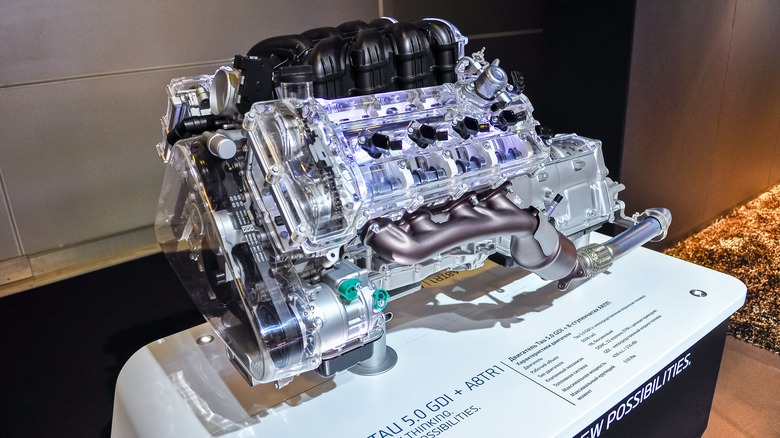
vlaru/Shutterstock
Fixing the problem is a little more complicated than explaining it since it depends on how bad the problems are. Your options are fairly limited if you have severe engine knocking and high amounts of carbon buildup. There are a variety of chemicals that you can buy over the counter that claim to clean carbon out of cylinders and off of fuel injectors. However, if these chemicals do clean, it’s often not nearly enough to make up for the amount of buildup on there.
If your engine is older, your best bet is to pay a mechanic to take the engine apart and clean it by hand. Some of the carbon may be exceptionally difficult to get off, so you may not be able to make it entirely clean again. However, knocking off most of the residue will still help keep your engine chugging along a little longer. The better advice is not to allow carbon buildup through proper engine maintenance. Owners of newer GDi engines can get oil changes at proper intervals, regularly replacing spark plugs and air filters, and some automakers recommend carbon cleaning as part of the car’s maintenance.
Fortunately, preventing LSPI requires almost identical steps. Making sure the oil is changed regularly, maintaining maintenance, and seeing a mechanic regularly for checkups will keep the problem from ever happening. There are some rumors that driving a GDi car hard will knock carbon deposits loose, but this claim has been widely debunked since harsh acceleration causes more carbon buildup. Just get your maintenance, and if the carbon gets too bad, have a mechanic clean it up.
Which automakers use GDi engines?

Tomeng/Getty Images
Most automakers use GDi engines somewhere in their lineup. They usually have special names or badges to denote that they’re GDi. For example, Kia puts GDi badges on vehicles that use the technology. Ford calls its GDi engines GDTi and brands them as EcoBoost engines , while GM uses Ecotec for its branding. Nearly all Mazda Skyactiv engines have direct injection. While it may take a bit to hunt down each individual engine that uses GDi from each automaker, rest assured that every automaker has at least one unless it’s a purely EV maker like Rivian or Tesla.
Some automakers use it more than others. Mazda, Volkswagen, BMW, Mercedes, Kia, GM, Hyundai, Honda, and Ford use GDi engines more than others, like Subaru or Toyota. Most of the rest of the automakers use multi-port injection, which is both direct injection and port injection in the same engine. Some automakers took longer than others to adopt the technology. For example, GM made a big push into GDi engines in 2003, almost a decade later than some car makers. Honda was also late to the party, finally adding GDi to its engines as recently as 2011.
Direct injection has almost always been a thing for some types of vehicles. Diesel engines famously use direct injection by default and have for most of their history. With that said, car manufacturers do tinker with other technologies occasionally, so just because GDI engines are everywhere doesn’t mean every engine is GDi.
How can I see if I have a GDi engine?
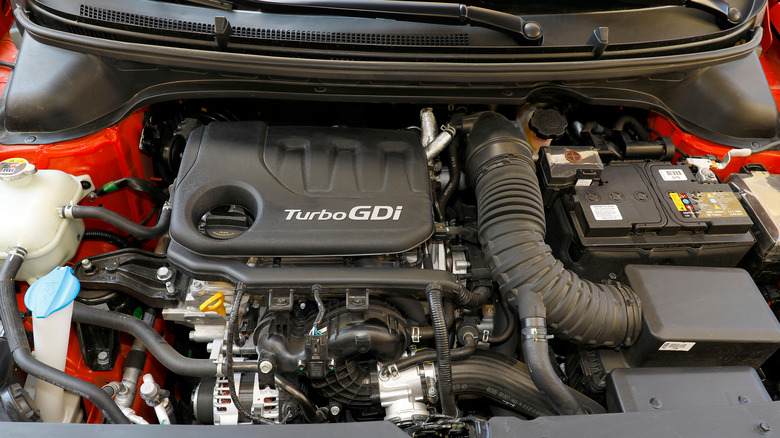
otomobil/Shutterstock
It’s natural to want to know what kind of engine your car has. Fortunately, there are a variety of ways to figure it out since automakers find varying ways to brand their engines as being GDi. The first and quickest method is to pop your hood. Many automakers, including Hyundai and others, may have printed GDi somewhere on the engine cover. The engine cover is a popular place to stash brandings like this, so it doesn’t hurt to check; it takes less than a minute. Some cars put this information on the fuel cap as well.
The slower, but more reliable method is checking the owner’s manual. Car makers will often put engine specs directly in there and will include things like fuel injection style. You’ll want to look for brandings, like Ford’s EcoBoost, or variants in abbreviations. For example, DI, FSI, TFSI, and GDTi are all acronyms for types of direct fuel injection. Mechanically savvy folks can also take the engine cover off and locate where the fuel injectors are to determine if their engine is GDi.
Of course, Google is your friend as well. Simply type your model’s name and year into a Google search and find out what kind of engine your car has. From there, it’s fairly simple to Google search the name of the engine to find out if it’s GDi. There isn’t a central authority for such a thing, but it’s usually not difficult to find specifications about an engine on the Internet once you know what to look for.
How does GDi compare to the competiton?
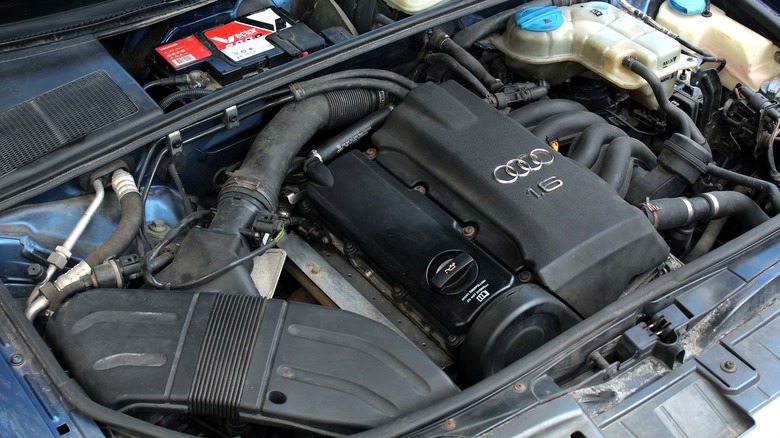
Best Auto Photo/Shutterstock
There are many variants of fuel injection but they all can be categorized into two main types: direct fuel injection and port injection. As previously mentioned, direct injection shoots gasoline directly into the engine valves. Port injection shoots fuel into the intake manifold where it is then carried into the engine cylinder for combustion. Both types of fuel injection count as multi-point fuel injection, meaning that each cylinder has its own fuel injector. Additionally, very nearly all engines use sequential fuel injection, meaning each fuel injector works independently of the other based on what the engine cylinder is doing.
Thus, the big difference is simply where the gas gets sprayed. A direct injection system requires high pressure and has a few issues like carbon buildup. However, it makes up for its deficiencies by having cleaner combustions, allowing engines to burn cleaner, more efficiently, and with more power. Port injection engines are the opposite. There is little risk of serious carbon buildup and it doesn’t require high-pressure fuel pump systems like GDi engines. However, port injection is notably less precise than GDi, making it less efficient.
Since government emissions standards care about fuel economy and emissions above all else, it has pushed automakers to GDi engines. With that said, both types of engines have seen plenty of advancements over the years to increase efficiency while minimizing weaknesses. Of course, it would be super cool if automakers started combining the technologies.
The future lives in dual injection
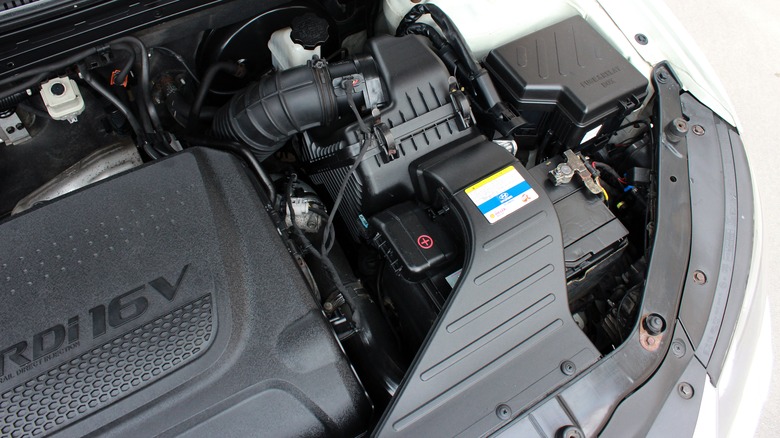
Best Auto Photo/Shutterstock
As it turns out, that’s precisely what automakers are doing. More and more vehicles are coming out with a combination of direct injection and port injection to help the engine minimize the detriments of each type of technology. Each automaker does things slightly differently. Toyota’s system is call D-4S while Subaru simply calls it direct injection. By mixing both technologies, automakers can iron out a lot of the problems of either system while still keeping in line with emissions standards.
The big benefit is fairly evident. You get the horsepower, efficiency, and lower emissions from a direct fuel injection system. Then, in certain circumstances, the port injection part of the system shoots gas in from the intake manifold and uses the cleaning power of gasoline to remove carbon buildup from the direct injectors. Automakers implement this differently, but most ensure that both fuel injection systems will operate while the car is being driven normally to ensure that cleaning occurs. It’s a win-win. In addition, dual injection can help keep engines cooler, which also helps minimize the risk of LSPI.
Fortunately, there are a lot of players in the dual injection scene already. Ford, Subaru, Toyota, and Nissan are fairly big players in dual injection, with engines that go back well over a decade that include both. Other automakers are coming around to the idea. Hyundai’s latest Smartstream engines have dual injection technology as well. Assuming hybrids and EVs don’t take over the market, we’ll likely see more dual-injection engines in the future.